ROCOCO
ART
The death of King Louis XIV (1715) marked an end of era for France and Europe. During
his reign the Sun King passionately supported the arts. At the time, the dictionary of the French Academy
stated that the word Rococo "usually covers the kind of ornament, style and design associated with Louis XV's reign
and the beginning of that of Louis XVI". The term Rococo is a combination of the Italian word "barocco" and
the French "rocaille", owing to the love of shell-like curves.
The Rococo style developed as a reaction
against the grandeur, symmetry and strict regulations of the Baroque style,
especially that of the Palace
of Versailles. After the Louis XIV’s death the art circle moved
back to Paris. Townhouses, not palaces, became the center of social life and whose owners sought a new style of
interior decoration. A light, ornamental, frivolous style that became known as Rococo. Rococo art and
architecture was ornate and made strong usage of creamy, pastel-like colors, asymmetrical designs, curves and gold.
Rococo rooms were designed as total works of art with elegant and ornate furniture, small sculptures, ornamental
mirrors, and tapestry complementing architecture, reliefs, and wall paintings.
Rococo is an idealized world of pleasure and
love. A feminized world of romantic love, music and human figures in dream-like poses without a care in the
world.
The beginning of the end for Rococo
came in the early 1760s as figures like Voltaire and Jacques-François Blondel began to voice their criticism of
the superficiality and degeneracy of the art. Rococo passed away, replaced by the order and seriousness of
Neoclassical artists like Jacques-Louis
David.
French Artists
JEAN-ANTOINE WATTEAU
(1684-1721)
Defined the Rococo spirit in art. Watteau is credited with inventing the genre
of fetes galantes (“courtship party”): scenes of bucolic and idyllic charm; people in outdoor settings of leisure,
gaiety and pleasure. An Arcadian world (unspoiled, harmonious) where the real world seems far away.
Very different from the world of Rembrandt.
“Amusements
Champetres” (‘Outdoor Fun’, c.1718)
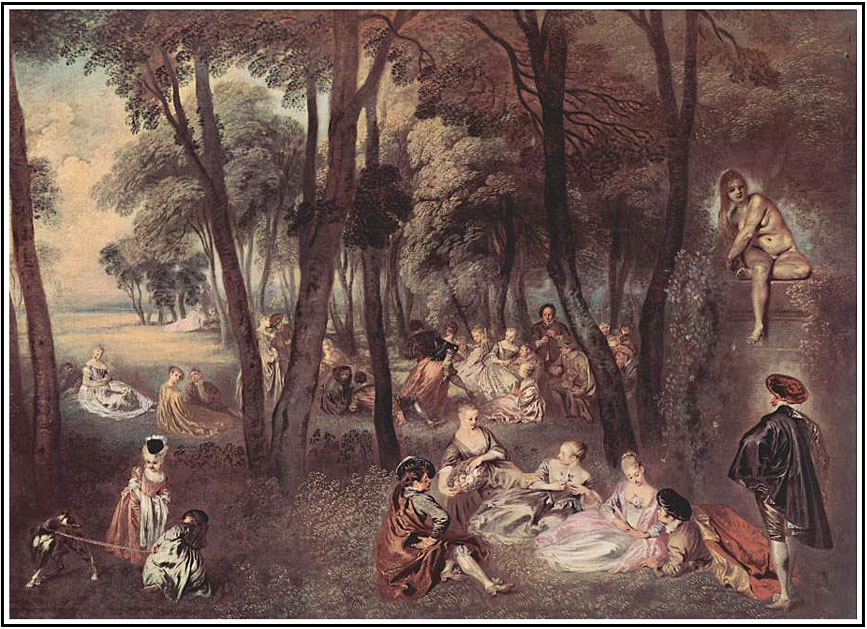
“L'Enseigne de
Gersaint” (‘The Shop Sign of Gersaint’, 1720)
Oil on Canvas (Charlottenburg Palace, Berlin, Germany)
Considered Watteau’s last masterpiece. The scene is an art gallery were the
façade has magically vanished. The gallery and street in the canvas are fused into one contiguous
drama. The painting is interpreted as a commentary on the shift in aristocratic culture (owing to the death
of King Louis XIV, 1715).
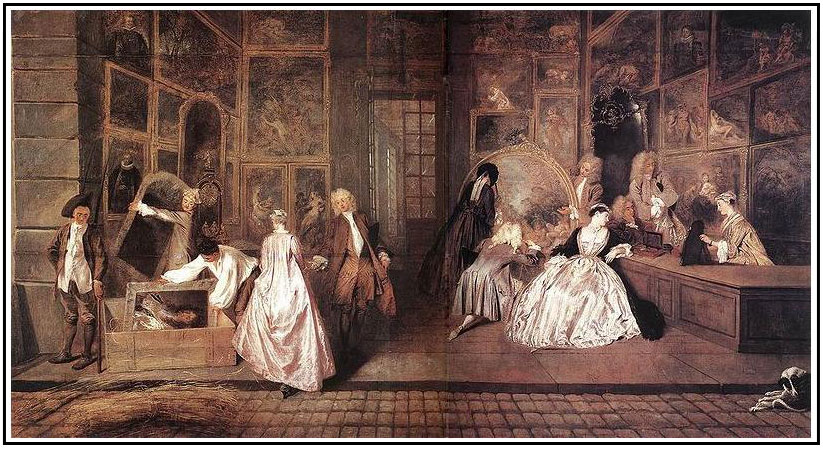
GIOVANNI BATTISTA
TIEPOLO (1696-1770)
Italian Rococo artist. Famous for ceiling art.
“Apollo in his Sun Chariot driving Beatrice
I”
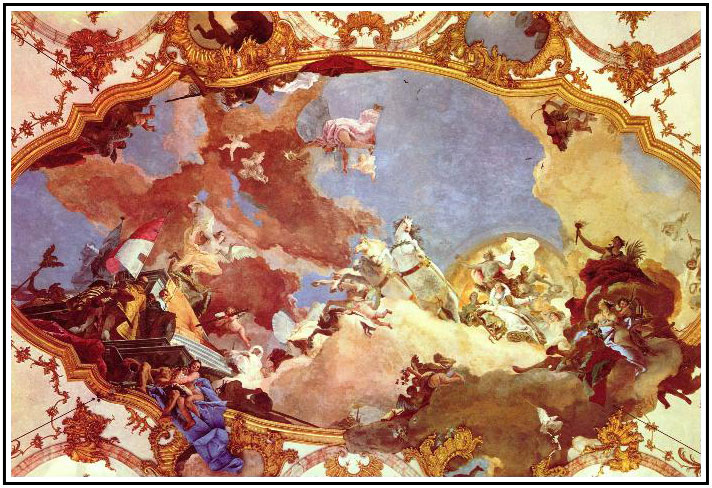
FRANCOIS
BOUCHER (1703-1770)
Known for his idyllic pastoral scenes and voluptuous female nudes. Favorite painter
of Madam Pomodour - the mistress of King Louis XV.
“Madame de
Pompadour” (1756)
Oil on Canvas (Alte Pinakothek, Munich, Germany)
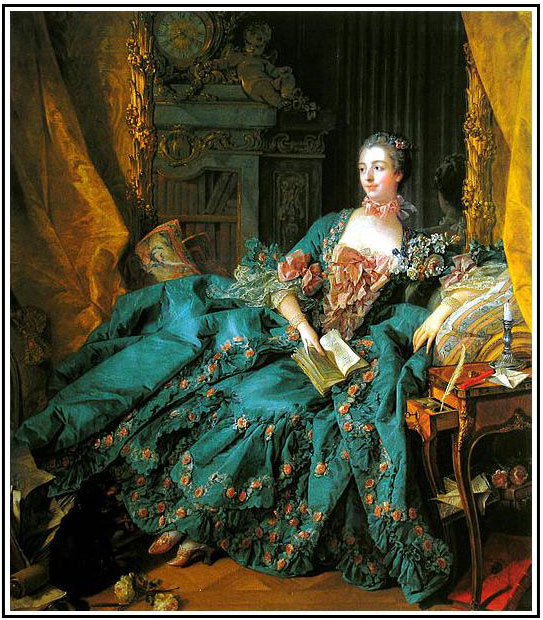
“Diana After the
Hunt” (1745)
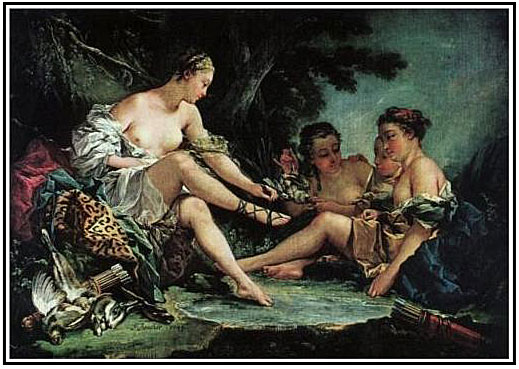
“Portrait of
Marie-Louise” (1752)
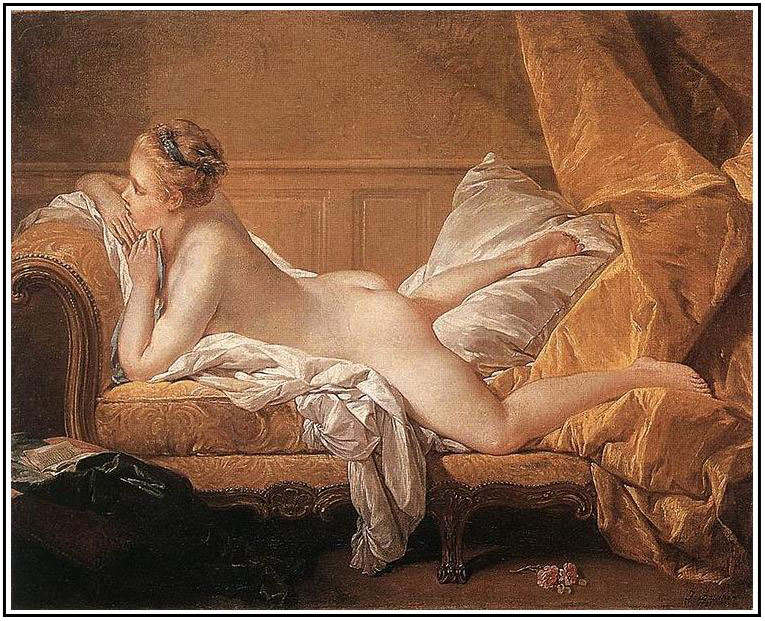
JEAN-BAPTISTE
CHARDIN (1699-1779)
Different approach to Rococo – no idealization, more reality, tangible. The
works of Chardin represented a sharp contrast to the decadent aristocratic ‘flimsy’ of Watteau. He painted
not a pleasured world of the aristocracy, but appealed to the moral seriousness of the times. In 1848, an
anonymous reviewer in the journal Magasin Pittoresque wrote:
“Watteau did lunches on the grass, walks in the moonlight, the capricious beauty
of the day with her elegant lover of choice, dances under the trees with titled shepherds and shepherdesses; but
Chardin did the honest and peaceful interior, the mother who clothes her son before sending him to school, the
mother teaching her offspring to stutter the name of God...It would seem that one century could not contain two
stories so different, yet they coincided.”
“Kitchen
Maid” (1738)
Oil on Canvas (National Gallery of Art, Washington)
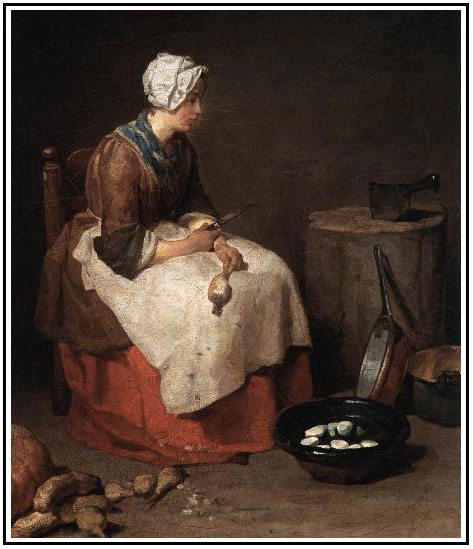
“Le
Benedicite” (‘Grace at Table’, c. 1740)
Oil on Canvas (Louvre, Paris)
Chardin made several versions of the painting including one as a gift to Louis
XV. Its bourgeois presence radiates a soft tranquility with a beautiful touch of
sentimentality.

JEAN-HONORE
FRAGONARD (1732-1806)
French painter and printmaker. Fragonard’s Rococo style was distinguished by
remarkable facility, exuberance and hedonism. One of the most prolific artists active in the last decades of
the Ancien Regime.
“The
Swing” (1767)
Oil on Canvas (Wallace Collection, London, England)
Amorous, erotic undertones.
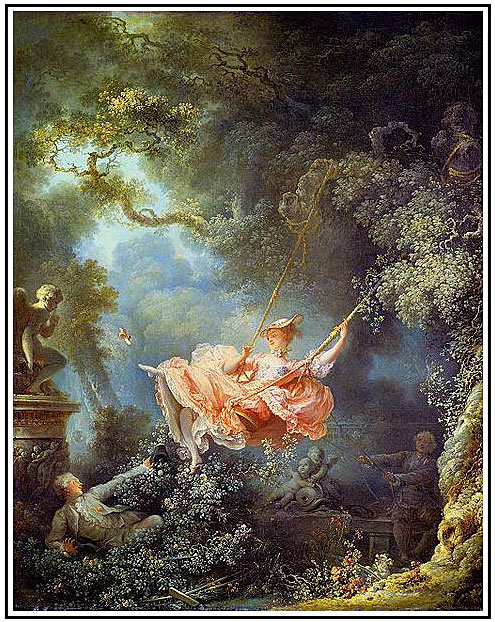
JACQUES LOUIS
DAVID (1748-1825)
David was an influential French painter in the Neoclassical style and Romantic
movements. His re-interpretation of history painting (paintings that tell stories) marked a change in taste
away from Rococo frivolity toward classical austerity with moral overtones. David lived in the final years of
the Ancien Regime and became an active supporter of the French Revolution and
friend of political radical Robespierre.
“The Oath of the Horiti” (1784)
Oil on Canvas (Louvre, Paris)
Depicts a scene from a Roman legend about two warring cities – Rome and Alba Longa –
where three brothers from the Roman Horati family sacrifice their lives for the good of Rome.

“The Death of
Marat” (1793)
Oil on Canvas (Royal Museums of Fine Arts of Belgium)
Famous painting of the murdered French revolutionary leader Jean-Paul Marat (one of
the leaders of the Montagnards, political radicals who unleashed, along with the Jacobins, the Reign of
Terror).
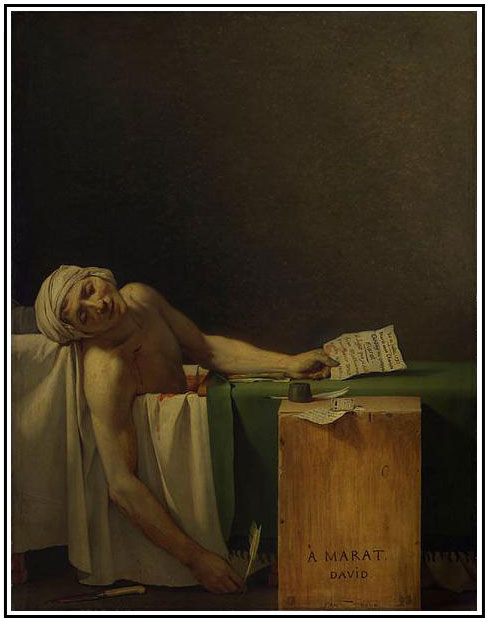
British Artists
WILLIAM
HOGARTH (1697-1764)
English painter, printmaker, pictoral satirist and cartoonist. Hogarth is
credited for pioneering western sequential art.
“Marriage a la
Mode #5: The Bagnio” (1743)
Oil on Canvas (National Gallery, London)
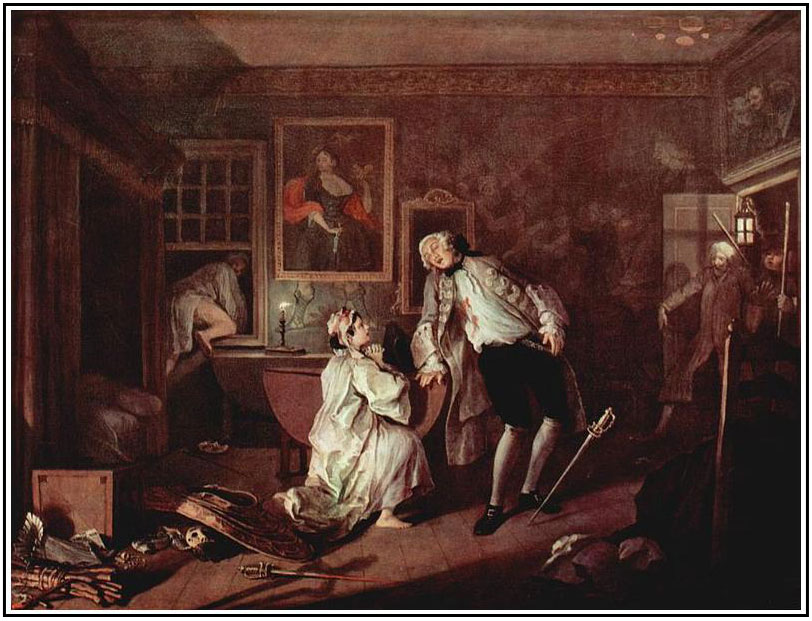
Marriage al la Mode - The Complete Series
THOMAS
GAINSBOROUGH (1727-1788)
English painter famous for landscape painting and portraits.
“Hollywells
Park” (1750)
Oil on Canvas (Private Collection, London)
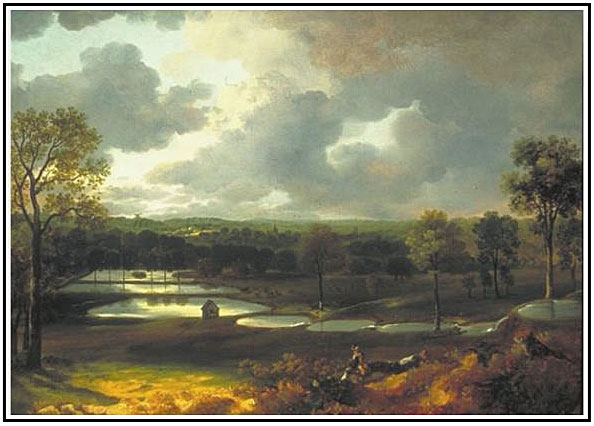
“The Blue
Boy” (c. 1770)
Oil on Canvas (Huntington Library, San Marino, California)
Considered Gainsborough most famous work. With “Blue Boy”, Gainsborough broke
the artistic rules of the day: emotionally, red paint advances and blue recedes. In Venetian painting blue
was used in the landscape. Gainsborough breaks this rule and uses blue as the dominate hue.
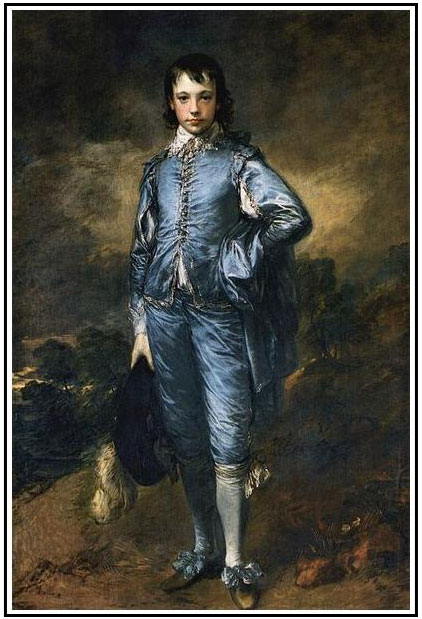
SIR JOSHUA
REYNOLDS (1723-1792)
English painter who specialized in portraits. Reynolds pioneered the "Grand
Style", an idealized style inspired by the artisans of High Renaissance. He
was one of the founders and first president of the Royal Academy, and was knighted by George III in
1769.
“Jane, Countess
of Harrington” (1778)
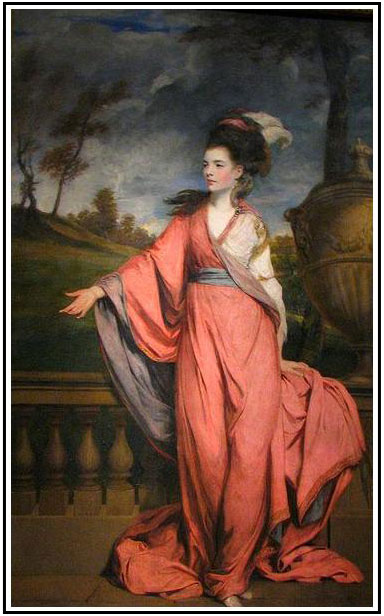
“The Age of
Innocence” (c. 1788)
Oil on Canvas (Tate, London)
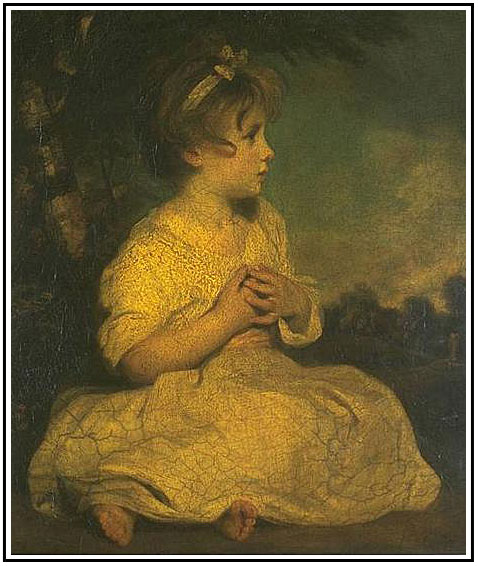
“Miss Bowles and
Her Dog” (c. 1775)
Oil on Canvas (Wallace Collection, London)
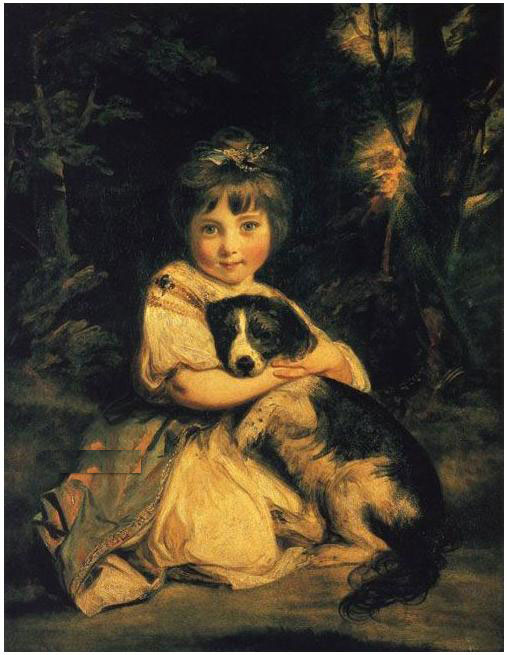
JOHN SINGLETON
COPLEY (1738-1815)
Copley is famous for portrait paintings of important figures in colonial New
England.
“Paul
Revere” (1770)
Oil on Canvas (Museum of Fine Arts Boston)

“Charles I
demanding the surrender of the five impeached members of the House of
Commons” (c. 1785)
Brunaille, Oil on Canvas
Painting caused a storm in London (act of war if French artist). First great
American work of art.
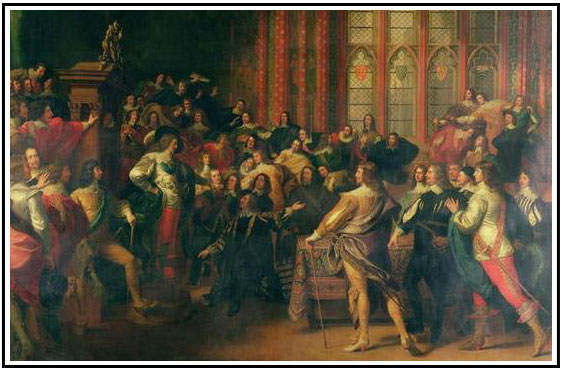
z
| 

















